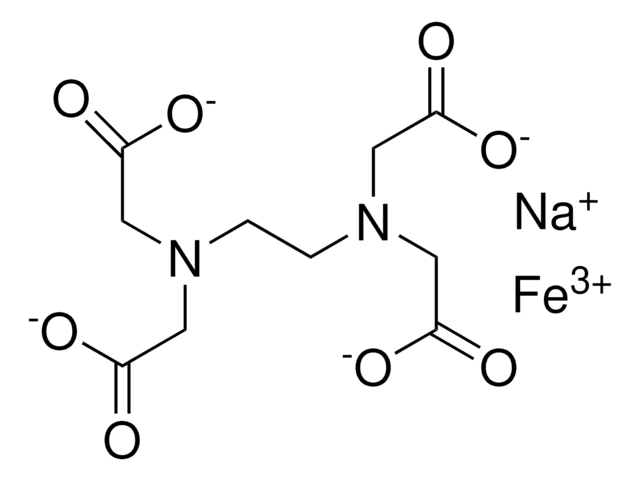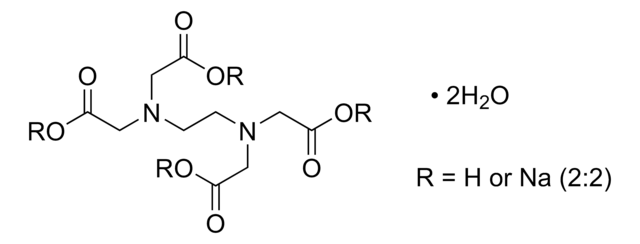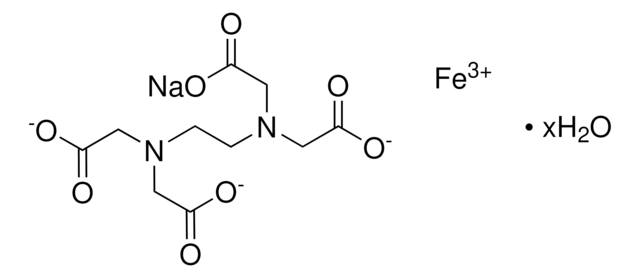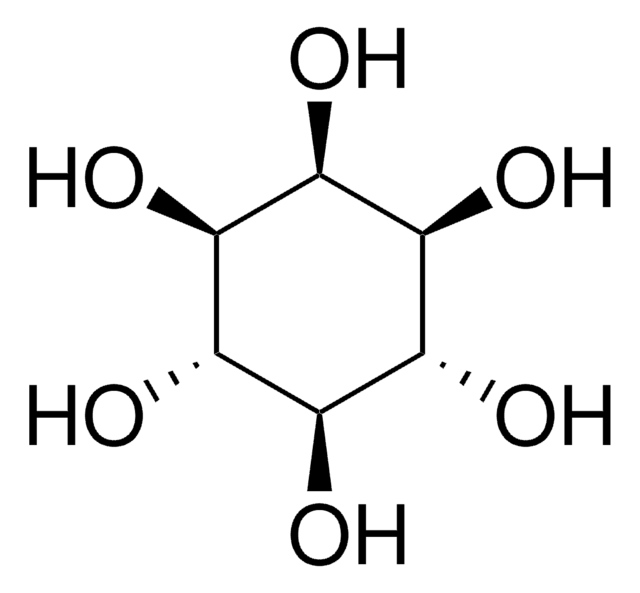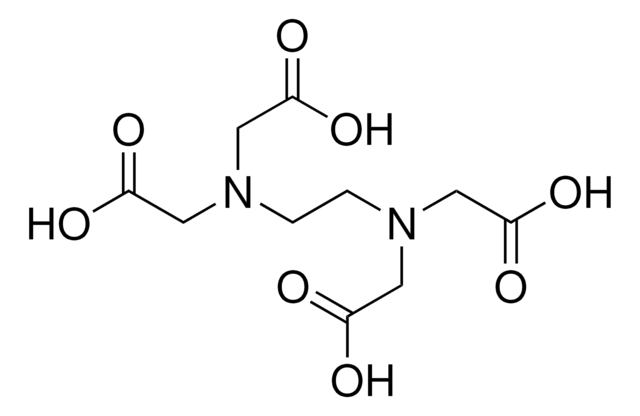E6760
Ethylenediaminetetraacetic acid ferric sodium salt
suitable for plant cell culture, BioReagent, crystalline
Synonym(s):
Ethylenediaminetetraacetic acid iron(III) sodium salt, Ferric sodium EDTA, EDTA iron(III) sodium salt, Edathamil, Komplexon™ II
About This Item
Recommended Products
grade
for molecular biology
Quality Level
product line
BioReagent
form
crystalline
technique(s)
cell culture | plant: suitable
storage temp.
room temp
SMILES string
[Na+].[Fe+3].[O-]C(=O)CN(CCN(CC([O-])=O)CC([O-])=O)CC([O-])=O
InChI
1S/C10H16N2O8.Fe.Na/c13-7(14)3-11(4-8(15)16)1-2-12(5-9(17)18)6-10(19)20;;/h1-6H2,(H,13,14)(H,15,16)(H,17,18)(H,19,20);;/q;+3;+1/p-4
InChI key
MKWYFZFMAMBPQK-UHFFFAOYSA-J
Looking for similar products? Visit Product Comparison Guide
Application
Biochem/physiol Actions
Legal Information
Storage Class Code
11 - Combustible Solids
WGK
WGK 2
Flash Point(F)
Not applicable
Flash Point(C)
Not applicable
Personal Protective Equipment
Choose from one of the most recent versions:
Certificates of Analysis (COA)
Don't see the Right Version?
If you require a particular version, you can look up a specific certificate by the Lot or Batch number.
Already Own This Product?
Find documentation for the products that you have recently purchased in the Document Library.
Which document(s) contains shelf-life or expiration date information for a given product?
If available for a given product, the recommended re-test date or the expiration date can be found on the Certificate of Analysis.
How do I get lot-specific information or a Certificate of Analysis?
The lot specific COA document can be found by entering the lot number above under the "Documents" section.
How do I find price and availability?
There are several ways to find pricing and availability for our products. Once you log onto our website, you will find the price and availability displayed on the product detail page. You can contact any of our Customer Sales and Service offices to receive a quote. USA customers: 1-800-325-3010 or view local office numbers.
What is the Department of Transportation shipping information for this product?
Transportation information can be found in Section 14 of the product's (M)SDS.To access the shipping information for this material, use the link on the product detail page for the product.
How can E6760, EDTA iron(III) sodium salt, be dissolved?
The product E6760 had a solubility assay conducted using 50mg/mL of water, yielding a clear to slightly hazy yellow to brown solution.
What is the difference between Product E6760, EDTA iron(III) sodium salt,and Product EDFS?
The E6760 has been plant cell culture tested.
What is the iron content of Product E6760, EDTA iron(III) sodium salt?
Essentially all of the iron is chelated in this product. E6760 has an iron content assay as part of its specification with an iron content of 13.7-18.7%. The theoretical iron content is 15.2%, so there is little if any free iron in this product. The EDTA and iron in E6760 are present in a 1:1 molar ratio. The exact iron content is lot specific and is stated on the Certificate of Analysis for each lot.
My question is not addressed here, how can I contact Technical Service for assistance?
Ask a Scientist here.
Our team of scientists has experience in all areas of research including Life Science, Material Science, Chemical Synthesis, Chromatography, Analytical and many others.
Contact Technical Service